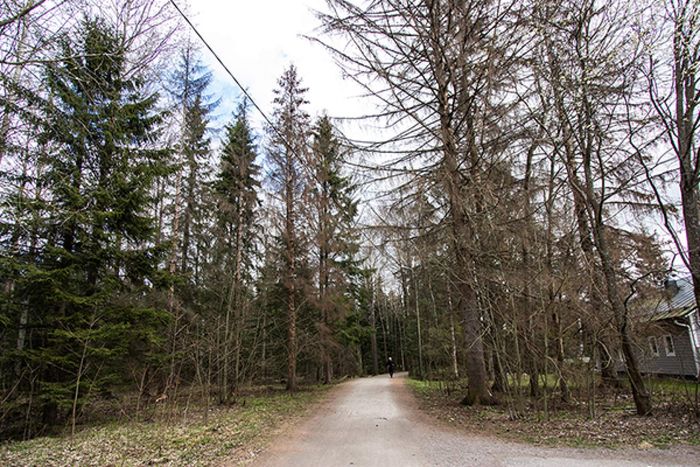Photo: Mikko Vuohelainen / Stara, City of Helsinki
9.10.2023
Paloheinä, Finland —The University of Eastern Finland (UEF) and the Finnish Geospatial Research Institute (FGI) of the National Land Survey of Finland (NLS), are at the forefront of investigating the symptoms of spruce infestation caused by the European spruce bark beetle in the Paloheinä conservation area.
Research Aim and Collaboration: The core objective of this collaborative initiative is to delve into the factors influencing host tree susceptibility to bark beetles and unveil the symptoms of mass attacks by Ips typographus on Norway spruce trees. Paloheinä, a conservation and recreation area in the Helsinki Central Park, was severely affected by drought in 2021-2022. As a result, the area is experiencing epidemic population densities of eruptive bark beetle species I. typographus. Coordinated by Prof. Päivi Lyytikäinen-Saarenmaa (UEF) and Prof. Eija Honkavaara (FGI NLS), the research combines expertise to comprehensively study the symptoms and impacts of the bark beetle outbreak damaging ecologically and socially important spruce stands in southern Finland.
Field Work Setup: A comprehensive fieldwork design is based on a multidisciplinary approach. The trees are weekly monitored using visual inspections. Installed across three sites, 52 dendrometers record daily changes in stem circumference. Sap flow in 15 trees per site is measured using Granier TDP, while 2×3 pheromone traps monitor bark beetle population densities.
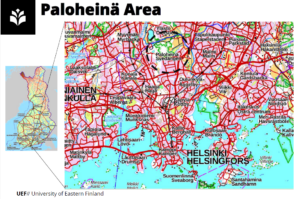
Insights from the Trap Catches: During the , Mikko Pelto-Arvo, a PhD student from the UEF, shared the insights into the trap catch dynamics, revealing peaks in June 2023, followed by a decline by July 1st. However, the trap catches increased again between July 24th and 31st, 2023. By August 2023, the bark beetle population density started to decrease in the study area.
Remote Sensing and Ground Reference Data: According to the project design, UEF provides the ground reference, while NLS FGI acquires remotely sensed data. Aerial campaigns, a joint effort of RESDiNET and the MULTIRISK projects, used a helicopter equipped with hyperspectral sensor, capturing images from 133 nm wavelengths. LiDAR scanning will be complemented by the hyperspectral data. Deep learning methods will be applied for statistical analysis. Prof. Honkavaara emphasizes the potential of the collected data to enhance the existing forest health diagnostic methods, with a scanning density of 500 points/m² enabling precise identification of tree branches with a 5 cm resolution.
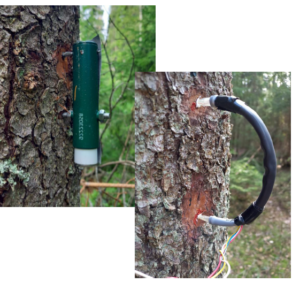
Impact and Future Prospects: I. typographus, a significant biotic agent of forest disturbances in Europe, has caused substantial ecological and economic losses in recent decades. The current proliferation of the European spruce bark beetle northward is severely damaging spruce stands in Finland. The RESDiNET and the MULTIRISK projects’ innovative approach promises to not only deepen our understanding of the Paloheinä outbreak but also enhance the forest monitoring and decision-making tools for the future.
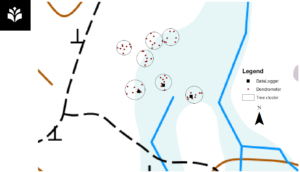
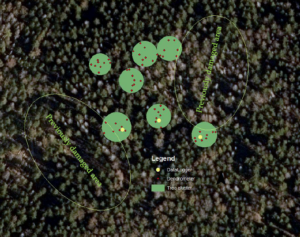
More information
Eija Honkavaara, Research Professor, FGI, +358 29 531 4716, firstname.lastname@nls.fi
Päivi Lyytikäinen-Saarenmaa, Senior Scientist, University of Eastern Finland, Department of Forest Sciences, +358 40 8254465, paivi.lyytikainen-saarenmaa@uef.fi
The study is part of the RESDINET project funded by Horizon Europe. The project enhances networking activities between research institutions in widening countries (Institute of Forest Ecology, Slovak Academy of Sciences, IFE SAS) and top-class counterparts at the EU level (Finnish Geospatial Research Institute, the University of Eastern Finland, and the Swedish University of Agricultural Sciences). An initial network will be established and a new shared research project will be developed in the project, focusing on the application of new remote sensing technologies (RST) in the forest disturbance ecology. The project builds on networking for excellence through the transfer of knowledge and the exchange of best practices between the involved institutions.
Research groups are part of the Academy of Finland flagship UNITE that researches and develops the Forest-Human-Machine Interplay by for world’s leading research groups in forest sciences, spatial data and sensor development, as well as gamification. The UNITE is a flagship consortium of School of Forest Sciences of University of Eastern Finland, Natural Resources Institute Finland, Finnish Geospatial Research Institute of National Land Survey of Finland and University of Tampere that cooperates with a large network of partners.

